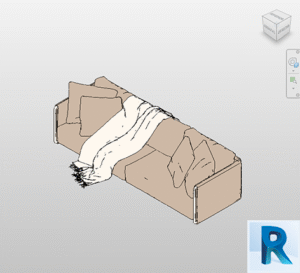Optimizing Construction Workflows with BIM
The integration of Building Information Modeling (BIM) into the construction industry has been transformative. As construction projects grow more complex, there’s an increasing demand for a systematic approach that not only improves collaboration but also reduces human error and waste. BIM stands at the intersection of these needs, providing a digital representation of physical and functional characteristics of a structure.
What Is BIM?

At its core, BIM offers a collaborative platform where various stakeholders—from architects to engineers—can engage in real-time communication. The advantage of BIM lies in its ability to visualize every phase of the construction process, integrating 3D models with scheduling and cost estimation. This approach creates a holistic view that aligns well with Lean Construction principles, reducing material waste and optimizing labor usage.
Project Management through BIM Integration
Efficient project management is crucial in today’s fast-paced construction environment. Traditional methods often struggle with keeping up with the dynamic demands of modern infrastructure projects. By integrating BIM into project management, professionals can reduce discrepancies between designs and actual construction, eliminating many of the coordination issues that typically arise. More importantly, this integration enhances risk management by enabling early detection of potential clashes or resource conflicts.
Streamlining Communication
One of the most significant benefits of BIM is how it centralizes communication. All team members access a single model where design changes are immediately visible to all stakeholders. This reduces the common delays caused by miscommunication between design teams and contractors, as well as allowing project managers to adjust timelines quickly based on real-time data. Through this improved communication, decision-making becomes more data-driven and transparent.
Cost and Time Optimization
BIM significantly influences both budget and time management in construction. It aids in precise cost estimation through 5D modeling, where time (4D) and cost (5D) elements are included in the model. With accurate resource allocation and project timelines, overruns and delays can be minimized.
Enhancing Collaboration in Construction with BIM
In any construction project, collaboration is key. BIM fosters this collaboration by making information accessible and understandable across multiple disciplines. For instance, structural engineers can work seamlessly with MEP (Mechanical, Electrical, and Plumbing) engineers, ensuring their designs are aligned in real-time.
Interdisciplinary Coordination
A well-executed BIM strategy minimizes design clashes, a common issue in large-scale projects. By identifying conflicts early—such as overlapping electrical and plumbing systems—rework can be avoided, saving both time and resources. Tools like clash detection in BIM allow teams to foresee these problems before they arise in the field.
Collaboration with External Teams
BIM also facilitates better collaboration with external teams, such as contractors and suppliers. The shared access to models and data provides these stakeholders with a clear understanding of project specifications and timelines, ensuring that deliverables are met more accurately.
BIM in Long-Term Asset Management
While much of BIM’s application is focused on the design and construction phases, its benefits extend well into the operation and maintenance of a building. A complete BIM model becomes a digital twin of the structure, holding all the information necessary for its long-term upkeep.
Digital Twins and Maintenance
A digital twin, formed through BIM, acts as a live database for the building’s operational data, from HVAC system performance to structural integrity assessments. Facility managers can reference this model for future renovations or repairs, improving the building’s longevity and reducing operating costs.
Lifecycle Costing

BIM also contributes to lifecycle costing, allowing owners and managers to forecast long-term expenses related to maintenance, energy consumption, and even potential future upgrades. This not only leads to better financial planning but also ensures that sustainability goals are met by reducing the need for significant repairs or reconstructions.
Closing Thoughts
BIM is revolutionizing construction by enabling more efficient workflows, enhancing interdisciplinary collaboration, and providing essential tools for long-term asset management. As the construction industry continues to evolve, BIM will remain at the forefront, offering new ways to improve not only how we design and build but also how we maintain and operate our infrastructure.
Free Revit families on Bimshares.com





